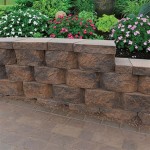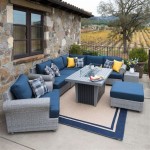Brick Patio Paver Designs: Creating a Beautiful and Durable Outdoor Space
Brick patio pavers offer a timeless and versatile solution for enhancing outdoor living spaces. Their durability, aesthetic appeal, and ease of installation make them a popular choice for homeowners looking to create a functional and visually striking patio. In this article, we will delve into the world of brick patio paver designs, exploring various layout patterns, materials, and considerations to help you craft your ideal outdoor oasis.
Understanding Brick Paver Layouts:
The choice of brick paver layout significantly impacts the overall look and feel of your patio. From classic patterns to contemporary designs, there is a wide array of options to suit various preferences and architectural styles. Here are some popular brick paver layouts:
- Running Bond: This simple and elegant pattern involves laying bricks end-to-end, creating a linear and continuous flow. It is a versatile choice for modern and traditional patio designs.
- Herringbone: This classic pattern features bricks laid in a V-shape, resembling the bones of a herring fish. Its distinctive zigzag appearance adds visual interest and texture to the patio.
- Basket Weave: This intricate pattern resembles a woven basket, with bricks arranged in alternating vertical and horizontal rows. It creates a sophisticated and timeless look.
- Stacked Bond: This minimalist pattern involves stacking bricks directly on top of each other, often with staggered joints to create a clean and modern aesthetic.
The chosen layout should complement the overall design of your home and landscaping. For a cohesive look, consider incorporating matching or complementary pavers in walkways, driveways, or other outdoor areas.
Selecting Brick Paver Materials:
Brick pavers are available in a wide range of materials, each with unique characteristics and aesthetic qualities. Understanding the differences between these materials is crucial for making an informed decision:
- Clay Brick Pavers: These traditional pavers are durable, frost-resistant, and available in a vast range of colors and textures. They offer a timeless and classic look, blending seamlessly with various architectural styles.
- Concrete Brick Pavers: Concrete pavers are manufactured in a wide variety of colors, shapes, and sizes, offering versatile design possibilities. They are generally more affordable than clay pavers, making them a cost-effective option.
- Stone Pavers: Natural stone pavers, such as granite, slate, or limestone, bring a unique character and rugged elegance to any patio. They are extremely durable and resistant to weather conditions.
The chosen material should consider factors such as budget, desired aesthetic, and local climate conditions. Consult with a landscaping professional to determine the most suitable material for your specific needs.
Essential Considerations for Brick Patio Paver Designs:
Incorporating these essential considerations ensures a successful and functional brick patio design:
- Drainage: Proper drainage is crucial for preventing water accumulation and damage to the patio foundation. Ensure a slight slope for water runoff, and consider adding drainage channels or gravel layers.
- Accessibility: Create a comfortable and accessible patio by incorporating features such as ramps, level walkways, and non-slip surfaces. This is especially important for individuals with mobility limitations.
- Maintenance: Brick pavers require minimal maintenance, but regular cleaning and sealing will help maintain their appearance and extend their lifespan. Consider using a sealant that protects against stains and weather damage.
- Lighting: Incorporate outdoor lighting to enhance the ambiance and safety of your patio. Consider string lights, lanterns, or recessed lighting for a warm and inviting atmosphere.
- Landscaping: Integrate your patio with the surrounding landscaping by incorporating plants, flowers, and shrubs. This creates a cohesive and visually appealing outdoor space.
By carefully planning and executing your brick patio paver design, you can create an inviting and durable outdoor space that complements your home and enhances your lifestyle.

Brick Paver Patio Designs Bethesda Md Installation

30 Easy Paver Patio Ideas And Designs On A Budget For Small Backyards Pavers Design Brick

10 Tips And Tricks For Paver Patios

Small Patio Pavers Ideas Paver House

Brick Paver Design Patterns Make Your Project Stand Out Mutualmaterials Com

Paver Patio Ideas The Cards We Drew

450 Best Patio With Pavers Ideas Paver Design

Brick Paver Patio Design Ideas For Central New Jersey Homes Des Home Renovations

9 Brick Patio Ideas For A Beautiful Backyard Bob Vila

Helpful Patio Paver Design Ideas For Your Landscape








